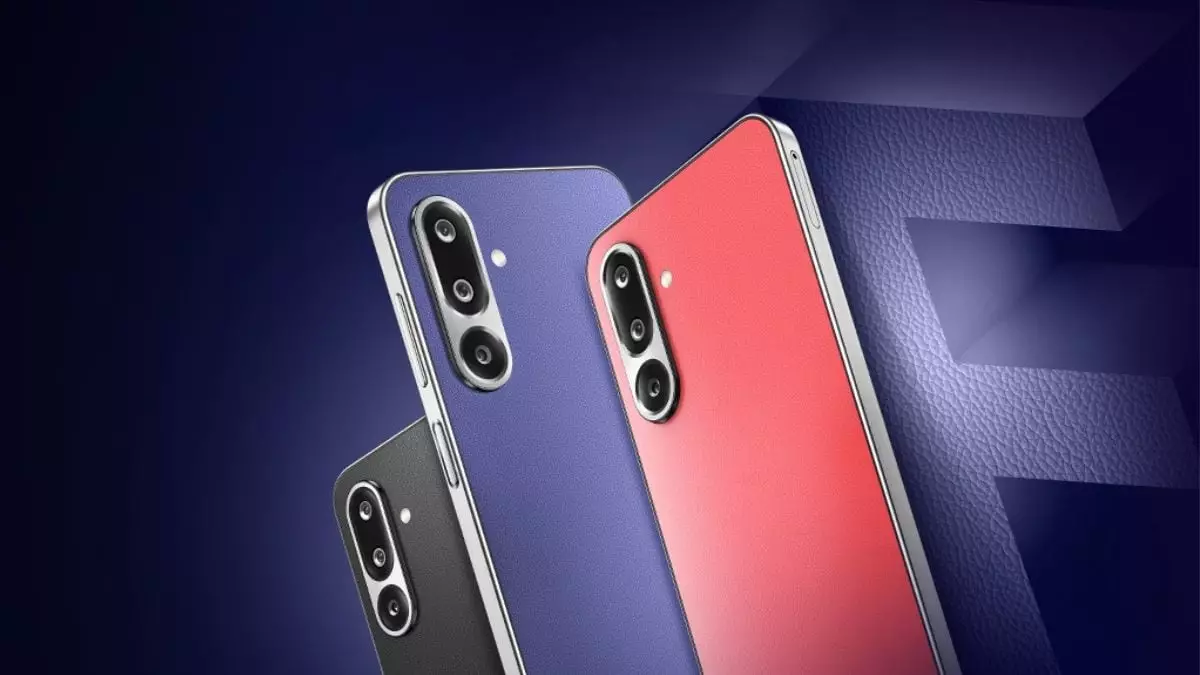Samsung’s latest offering, the Galaxy F36 5G, is yet another attempt by the tech giant to dominate the budget segment in India, but beneath its attractive price tag of Rs. 17,499 lies a product that struggles to deliver genuine value. While the device is positioned as an affordable 5G smartphone, the promise of cutting-edge features at such a low price often masks underlying compromises. True innovation requires more than just the latest chip or a large display; it demands durability, software support, and a sustained user experience—areas where the F36 5G raises questions. The leather finish rear panel may be aesthetically appealing, but it’s easy to dismiss as a superficial luxury feature that, in reality, does little to impact the device’s longevity or durability.
Performance, But at What Cost?
Equipped with the Exynos 1380 chipset, the Galaxy F36 5G claims to offer smooth performance for everyday tasks. Yet, based on broader experiences with Exynos chips, expectations should be tempered. Historically, Samsung’s own Exynos processors tend to lag behind Qualcomm Snapdragon counterparts in both efficiency and power management. The inclusion of a Mali-G68 GPU and up to 8GB RAM suggests a device geared toward casual users, but likely falls short under the weight of multitasking or more demanding applications. The thermal management system, featuring a vapor chamber, is a laudable attempt to mitigate overheating, but this is a feature often reserved for higher-end models. Whether it can withstand prolonged use without throttling remains uncertain.
The Photography Promise and Its Pitfalls
Samsung’s marketing emphasizes a versatile triple-camera setup, led by a 50-megapixel main sensor equipped with optical image stabilization. While on paper this sounds impressive for a device under Rs. 20,000, real-world performance often tells a different story. Budget camera sensors frequently struggle in low-light conditions, and the reliance on AI features such as Image Clipper or Object Eraser might provide superficial enhancements rather than substantive improvements. The macro lens and ultra-wide sensor, though attractive additions, tend to be underwhelming in execution, delivering images that rarely match the clarity or detail seen in more premium devices. Expecting flagship camera quality at this price point is an oversimplification that sets unrealistic expectations.
Software and Long-Term Support: An Afterthought?
One of the redeeming qualities of the Galaxy F36 5G is its promise of six Android OS updates and seven years of security patches. While Samsung’s intentions here are commendable, the longevity of software updates can vary widely based on regional support, hardware capabilities, and the company’s commitment over time. Moreover, Android 15 with One UI 7 out-of-the-box may bring features that are appealing but also contribute to bloatware and performance issues, particularly on a device with modest hardware. The emphasis on AI features like Google’s Circle to Search and Gemini Live might seem innovative, but these are essentially gimmicks unless integrated seamlessly into a reliable user experience.
The Reality of Usage and Practical Limitations
In daily use, such a device’s performance will inevitably be shaped by its battery capacity and build quality. The 5,000mAh battery paired with 25W fast charging is adequate but not exceptional—many competitors offer faster charging options and more efficient power management. The inclusion of a side fingerprint sensor, waterdrop notch, and a 6.7-inch AMOLED display reflects typical design choices; however, the weight of nearly 200 grams and dimensions suggest a bulky device that might compromise comfort. Connectivity options, including Bluetooth 5.3 and dual-band Wi-Fi, are standard, but don’t compensate for the absence of more modern features like wireless charging or IP ratings for water resistance—features that could greatly enhance the device’s durability and user satisfaction over time.
The Bottom Line: Superficial Appeal Versus Real-World Utility
Samsung’s Galaxy F36 5G, with its competitive price tag, seems poised to attract budget-conscious consumers eager for 5G connectivity. Yet, beneath this veneer lies a device that’s hindered by compromises—questionable durability claims, modest processing power, and camera limitations that prevent it from truly excelling in any one domain. The internal hardware and software promises of extended updates are promising, but their real-world impact remains to be seen. Ultimately, the F36 5G epitomizes the duality inherent in many budget smartphones: appealing on the surface but often failing to meet the deeper expectations of quality, longevity, and genuine innovation. Buyers should approach with cautious optimism, aware of the device’s limitations and the compromises they’re making in exchange for affordability.



Leave a Reply